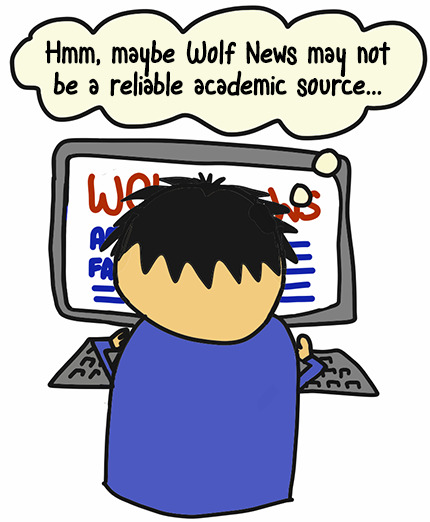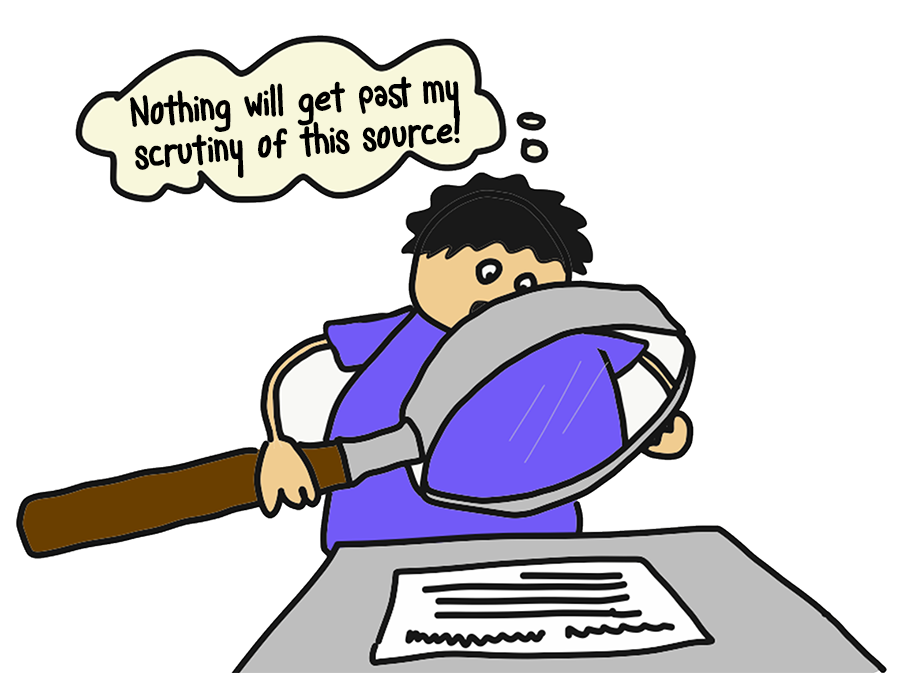Critical reading is an important skill for all students. While the way in which you read may vary by discipline, there are some general principles that you can follow to help make your reading more critical.
It doesn’t start with reading…
When you are doing any form of critical reading, it is essential that you don’t just pick up your source and start to read. You should first question what kind of source this is (journal article, book, webpage etc.) and who wrote it (an academic, a researcher, an organisation etc.). These are really important questions to consider before you start reading as they will inform your critical approach.

For example, if you are reading a webpage, you need to consider questions like:
- Who is the author?
- Why have they written this webpage?
- Who is the intended audience?
The questions above are less important for an academic peer-reviewed journal. Instead, you need to scrutinize the abstract and title. This helps ensure the article is going to be relevant to your learning and/or assessment before you begin reading.
Before you read, always think of CRAAP:
| Currency | When was this written or updated – is it still relevant? |
| Relevance | Who is the audience and is it suitable for your purposes? |
| Authority | Who wrote this? What qualifies them to write on this topic? |
| Accuracy | Does this source use academic/appropriate evidence? |
| Purpose | Why was this written? Is there going to be bias? |

All of these points should inform your reading. If something is written by a potentially biased source, you need to carefully read what they have written to see if you can identify any skewed perspectives, misinformation or omissions.
This kind of initial screening should also include a focus on the title, abstract, description or any other information about the source. This should be read carefully as it can help identify if your source is worth reading at all.
Read systematically
Once you’ve scrutinized the CRAAP out of what you are about to read, you need to consider how you are going to read it critically. The SQ3R approach is an excellent way to ensure you approach this systematically:
Survey
Skim through the source and see what you discover. Focus on the title, abstract, index, contents, diagrams, tables and any other elements that will help you judge the worth of the source
Question
Before you start to read, think of the questions you want your source to answer and use these questions to guide your reading and critical attention. If you’re reading something to find out about the method, you don’t necessarily want to focus your attention on being critical about the conclusions. Yes – you should consider the article as a whole, but don’t let it distract you from your reading purpose.
Read
Now you can finally start to read your source! If the source doesn’t begin to address your questions from step 1 – stop reading. Go back to searching and find something else. While reading, make a note of anything important points or anything you don’t understand. You can come back to these bits and take fuller notes later.
Recall Notes
In SQ3R, this step focuses on recall, but I’m mixing this up a bit to focus on notes. Recall is an important part of this, and after reading, you should write notes based on what you remember from what you have just read. Where required, however, feel free to check back over the areas you’ve highlighted and make some fuller notes. It is essential that your notes use your words and reflect your understanding/questioning. If you just copy quotes or phrases, it is not critical, nor does it help develop your understanding of what you have just read.
Review
While some guides pair review with recall, you should really try and review your notes a few days later. Leaving a gap between taking your notes and reviewing them serves as an act of ‘spaced repetition’ – a very effective way of learning. Your review should go beyond just reading your notes. You could turn them into a small mindmap, or connect the ideas from several articles together on a new page in your notebook. This could even be as simple as turning your notes on this reading into a summary card, or incorporating them into your essay plan. No matter what you do, making the review a part of your reading process ensures you actually use the content you read.
Identify the argument
The number one question you need to answer from any of your reading focuses on identifying the argument or arguments in the source you are reading. Through these arguments, authors will make claims that they support with their evidence/reasons and they will try to persuade the reader (you) that these claims are correct or significant in some way.
Questions you may want to consider:
- Are the premises believable?
- How does the author back them up?
- Has the author provided corroborative evidence?
- Is the author making any assumptions that weaken the premises?
- Is the claim a logical one given the premises?
More critical questions to ask
Critical questioning goes beyond identifying the argument. The following critical questions are adapted from the University of Plymouth (2008:13). Every question won’t apply to every paper you read, but you should find them applicable to most situations:
| What? | What is this about? |
| What is the context? | |
| What is the main point(s)? | |
| Where? | Where does this take place? |
| Where is this? – what context does this bring? | |
| Who? | Who is this by? |
| Who is involved? | |
| Who is affected? | |
| Who might be interested? | |
| When? | When does this occur? |
| How long ago was this? | |
| Is this still relevant? | |
| How? | How did this occur? |
| How does this work? – in theory or practice? | |
| How does one factor impact others? | |
| How does this link to the whole? | |
| Why? | Why did this occur? |
| Why was that done? | |
| Why this argument/theory? | |
| Why this conclusion/suggestion? | |
| Why not something else? | |
| What if? | What if this were wrong? |
| What are the alternatives? | |
| What if there were a problem? | |
| What if this factor where changed? – what if something is added/removed? | |
| So what? | What does this mean? |
| Why is it significant? | |
| Is this convincing? Why? Why not? | |
| What are the implications? | |
| Is it successful? | |
| How does it meet the criteria? | |
| What next? | Is it transferable? |
| How and where else can it be applied? | |
| What can be learnt from it? | |
| What needs doing now? |
